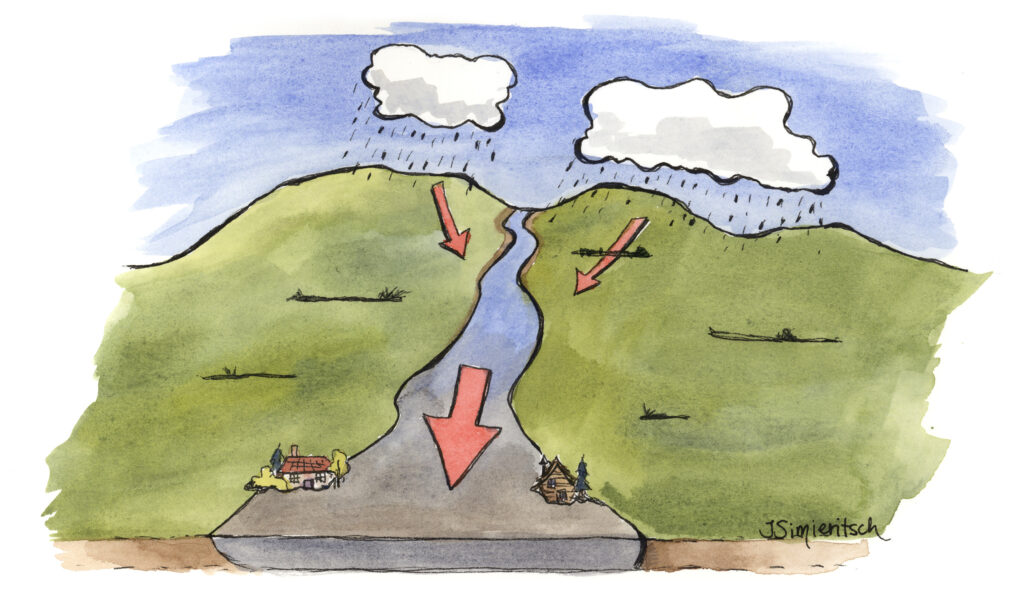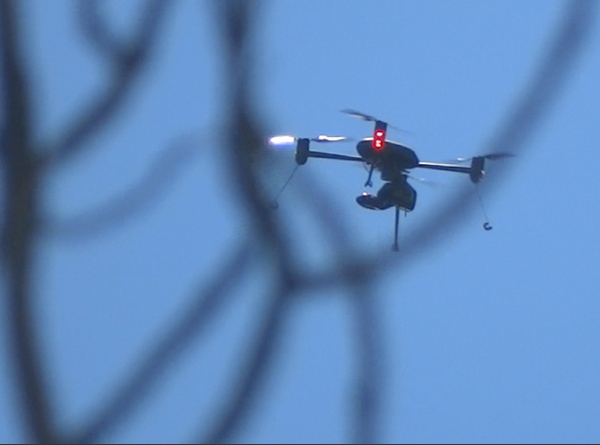Wetlands perform a wide array of important functions, some highly beneficial from an ecological standpoint, as well as many important ecosystem services that are inherently useful for humans. Many people understand that wetlands of all types provide habitat for a range of species, however many don’t understand that they are also critical habitat for migrating waterfowl and many species at risk and rare plants. In fact, wetlands are one of the most productive types of ecosystems in the world!

In terms of what wetlands do for us humans, there are some pretty key services on the list. Wetlands improve water quality by filtering out sediments and nutrients, they store water in times of flooding and release it in times of drought (which balances out the amount of water available for human use). Wetlands store carbon (peatlands are particularly important for this) and provide us with some fantastic recreational opportunities (like hunting, fishing and bird watching). There are also some important indigenous uses for wetland habitat and plants. Wetlands do so much for us, but what have we done for wetlands lately?

What have we done for wetlands, lately? Wetland work is a big part of what we do at Fiera and we tend to cover the whole spectrum of wetland related work, from field assessments, to creating wetland management tools, to policy work, and wetland education projects. We have built advocacy for these important ecosystems in to all the work that we do, for example in our wetland assessment work we ensure that we are thorough in our desktop and field work and confirm that clients understand their options for avoiding impacts, retention of wetland function, and replacement of wetlands that are lost. We also provide communications products to encourage landowners to restore drained wetlands for clients as they use wetland restoration as a tool for flood mitigation and we are often engaged as speakers on various wetland topics. Our very own Dr. Shari Clare has published numerous scientific publications spanning wetland ecology, wetland management, and wetland policy in Alberta.

When we examine wetland loss from a global perspective, the story is pretty dire. Since the 1700s, nearly 90% of the world’s wetlands have been degraded, and we are continuing to lose wetlands three times faster than forests (https://www.worldwetlandsday.org/about). Unfortunately, here in the province of Alberta, the statistics are not much better. In the early 1900s, European settlers came to Alberta to establish agricultural operations and wetlands were deemed a barrier to agricultural development or as a sign of poorly managed land.
This led to large amounts of wetland drainage, some of it even paid for by the provincial government at the time. And even though we know better now and there are policies, laws and initiatives currently in place to protect wetlands, we continue to see broadscale drainage and damage of these important ecosystems. It is estimated that 60-70% of wetlands in Alberta have been lost in settled areas (https://www.alberta.ca/wetlands-overview.aspx) and the loss continues. The consequences of this drainage are being felt in various ways. In certain areas, this looks like increased flooding and the effects of drought are felt more strongly, in others municipal systems are requiring the implementation of more water quality improvement measures to offset for the natural filtration systems that wetlands provided before they were lost.

All of this is to say that there is most definitely a need to not only increase awareness and knowledge of wetlands, but to advocate for conservation of existing wetlands and the restoration of drained wetlands to ensure that wetlands are on the landscape to provide important ecosystem services and ecological functions.

That’s why we’re posting this on 2022 World Wetlands Day. The theme for 2022 World Wetlands Day is “a call to take action, an appeal to invest financial, human and political capital to save the world’s wetlands from disappearing and restore those lost or degraded”.
World Wetlands Day is celebrated each year as a chance to raise awareness about wetlands. This particular date was chosen as it marks the anniversary of the Convention on Wetlands, an international treaty that was adopted on February 2, 1971 (https://www.worldwetlandsday.org/about).
So maybe it doesn’t matter so much what we have done for wetlands, lately, so much as it matters what we can do for wetlands now and into the future. Here are some things that anyone can do!
- Learn about wetlands. Educate yourself! Awareness and knowledge are the first key components of building towards wetland stewardship. A few great places to access resources are:
- Cows and Fish (https://cowsandfish.org/publications/value-of-wetlands/)
- AB NAWMP (https://abnawmp.ca/resource_room/)
- ABMI (https://ftp-public.abmi.ca/home/publications/documents/375_Williams_2015_AlbertaWetlandDiscoveriesFieldGuide_ABMI.pdf
- Government of Alberta (https://www.alberta.ca/wetlands-overview.aspx)
- Support organizations that work to conserve wetlands, such as Ducks Unlimited, ALUS, Nature Conservancy Canada.
- Appeal to decision-makers, either on behalf of your local wetlands or to strengthen policies and implementation of policies and acts to ensure that wetlands are being prioritized for on the ground action – your local municipal councillor is a good place to start.
- And gold star action would be to conserve or restore a wetland on your own property if you have one!






